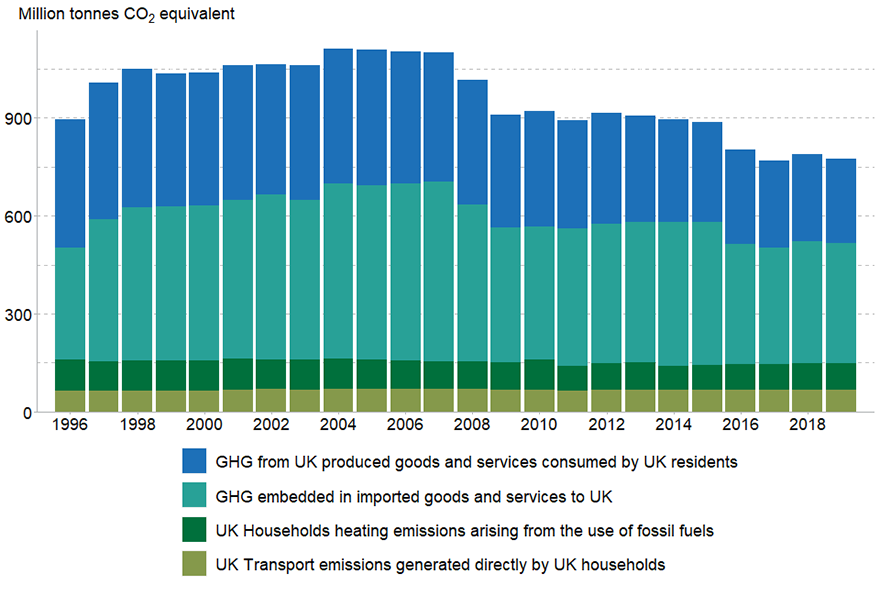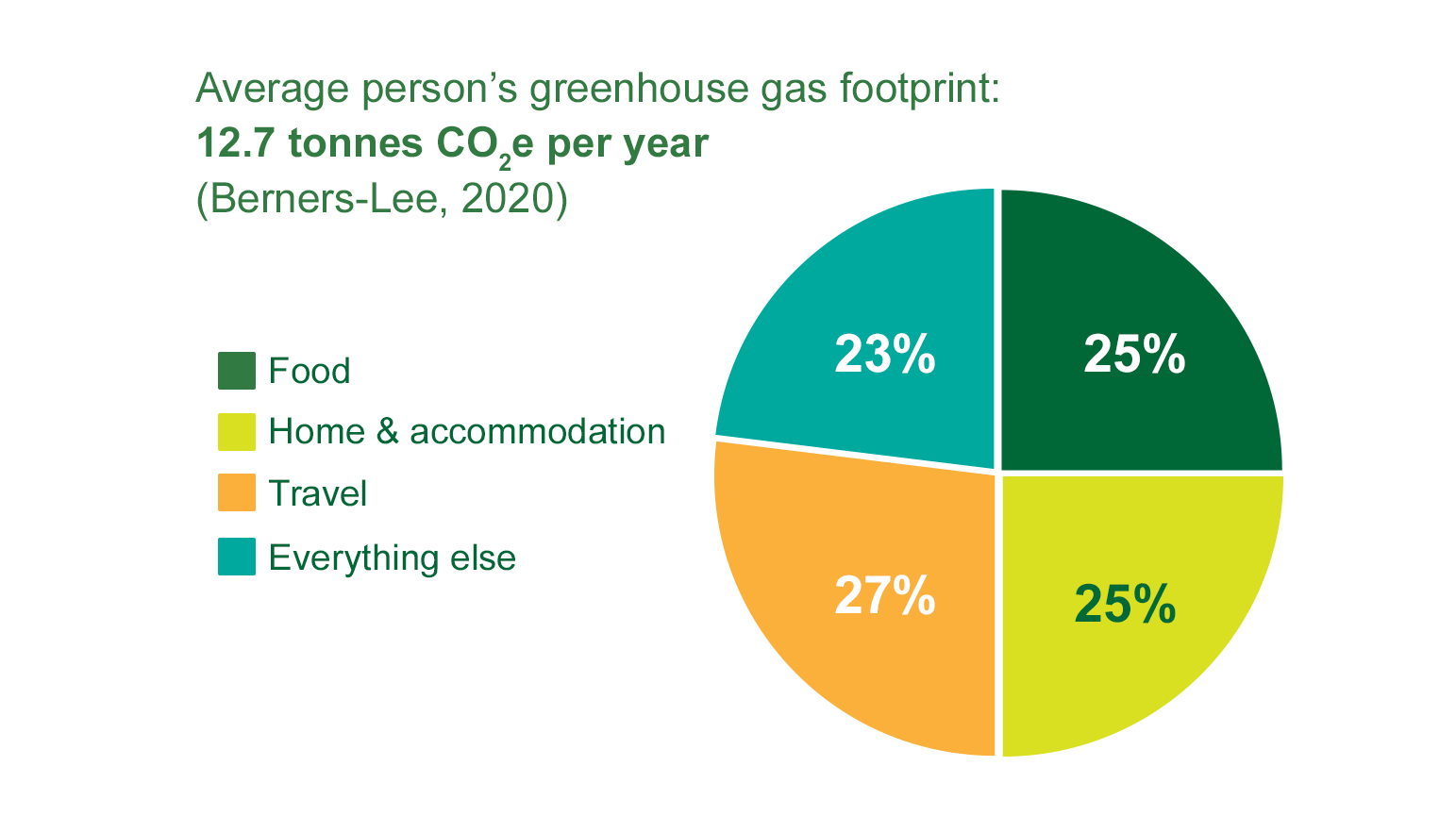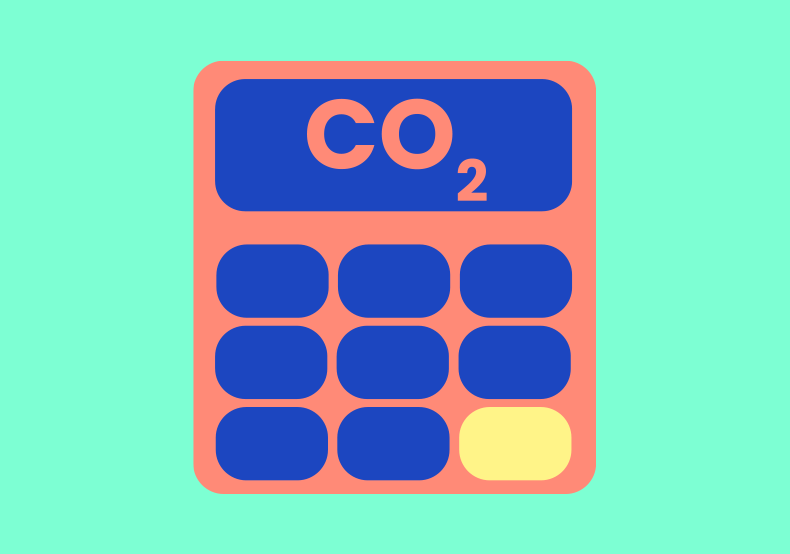What is it?
The Open University's Carbon Calculator was developed for the OU module Environment: journeys through a changing world and is designed to measure the personal consumption-based carbon footprint of a UK inhabitant (if you live outside the UK, see further resources).
This calculator starts with all the greenhouse gases emitted in supplying what the UK consumes, including the emissions embedded in imports. It then divides this total by the UK population to give the average annual emissions per person.
Video: Peter Harper on The OU's Carbon Calculator
How to use it
The calculator starts by assuming you are close to the UK average in all aspects of your carbon footprint. As you answer the calculator’s questions, it shows how your responses change your personal footprint from the average and when you have completed the questions gives your existing carbon footprint on the Summary screen.
You’ll find that some questions don’t exactly fit your personal situation and there are options that require estimates (or even ‘guestimates’). So, you’ll have to choose answers or values that fit your situation as closely as possible.
After you have calculated your existing carbon footprint, the Target screen allows you to set a Personal or Government reduction target.
You can then change your answers to see how this affects your carbon footprint to identify how best to reduce it to try to reach the target (eg, by insulating your home, flying less, or changing your diet).
An optional Decarbonisation screen gives you the opportunity to reduce your footprint by paying carbon taxes and/or buying ‘voluntary carbon offsets’ to invest in emissions reduction projects in the UK or abroad.
Using the calculator should be self-explanatory. Most questions have an (i) symbol beside them with pop-up further information and guidance. However, some screens and questions may need further guidance or explanation (eg, how to save, open and delete calculator files). These are covered in the FAQs (link below).
What you can do with the information you gain from it
- Obtain an estimate of your existing carbon footprint
- See the effect of making changes to your home, travel, diet and consumption behaviour to reduce your existing carbon footprint
- Check how your changes match a personal or government reduction target on the way to net zero
- See what else you can do to decarbonise your footprint through taxation and/or carbon offsets
Launch The Open University's Carbon Calculator (opens in new tab / window)
Please note that for the calculator to work, all cookies need to be enabled on some browsers.
When this calculator was developed the average carbon
footprint of a person living in the UK was calculated at 14.6 tonnes CO2e/year.
Since then, emissions from the UK electricity system, some other sectors and embedded
in imports have fallen as the UK and other countries attempt to move towards
net zero. According to official statistics, by 2019 total UK consumption-based
emissions were 774 million tonnes CO2e (Figure 1) meaning that the average
carbon footprint was about 11.6 tonnes CO2e/person/year. By 2022 the average
footprint is estimated to have fallen to about 11.3 tonnes CO2e/person/year.
 Figure 1 Greenhouse gas emissions associated with UK consumption 1996 to 2019 (DEFRA, 2022)
Figure 1 Greenhouse gas emissions associated with UK consumption 1996 to 2019 (DEFRA, 2022)However, carbon footprints differ significantly depending on their source. For example, for the 2020 UK Climate Change Assembly Mike Berners Lee, a leading footprint expert, calculated the UK average annual carbon footprint at 12.7 tonnes CO2e per person (Figure 2), just before the COVID-19 lockdowns during which emissions fell significantly before gradually rising again.
 Figure 2 Main components of an average UK inhabitant’s carbon footprint. For home, domestic energy use is the main component, for travel it is car travel and flights, and for everything else the main components are use of services like health and education.
Figure 2 Main components of an average UK inhabitant’s carbon footprint. For home, domestic energy use is the main component, for travel it is car travel and flights, and for everything else the main components are use of services like health and education.Different calculators therefore give different results depending on their assumptions, data sources and what they include. This calculator attempts to be comprehensive by including the effects of income, goods and services consumption and infrastructure emissions as well as the usual energy, food and transport footprints. For this article we are using the current version of the calculator used in the U116 module (Environment: journeys through a changing world). It will be updated in a second edition.
You should treat the calculator as an educational tool designed to be quick and easy to use and to explore options for reducing your existing carbon footprint, rather than to produce the most precise results.
For more information, see Carbon Calculator FAQs.
The limits of reducing personal carbon footprints
Although they can contribute, it is not possible for individuals alone to reduce the UK’s carbon footprint to net zero. Major changes are needed in the nation’s energy, transport, built environment, agriculture, waste and other systems, even ignoring the emissions embedded in imports that are not decarbonised where they are produced.
One way to explore different levels of major infrastructure change to move the UK’s territorial carbon footprint towards net zero by 2050 is to use the Mackay carbon calculator, developed by the UK Department of Business, Energy & Industrial Strategy with four partners.
In the Mackay calculator nearly half of total UK territorial GHG emissions in 2020 arose from homes, domestic transport, and non-business flights. Reducing those emissions requires actions by government and industry as well as individuals. For example, government policies and industry actions to increase the uptake of heat pumps and consumers willing to adopt them are all required. In the Mackay calculator emissions from food and goods and services consumption are included, but it is difficult to separate the responsibility of individuals from industry and government. Other emissions need mainly to be reduced by government and industry actions. Emissions embedded in imports are not included.
What should educational institutions and governments do?
Peter Harper gives his view on higher education and government policies to address the climate crisis.
I don't live in the UK, will The OU Carbon Calculator work for me?
The OU Carbon Calculator is designed for people living in the UK. However, if you live in a north-western European country, such as the Irish Republic, the Netherlands, Belgium, north and mid France, western parts of Germany or northern Italy with a similar winter climate to the UK, you can use The OU Carbon Calculator.
If you live outside these areas, The OU calculator’s results won’t be accurate, and some questions may not be applicable. We suggest that you use an alternative online calculator called Carbonfootprint.com. Select 'calculate' then 'individual.'
More from OpenLearn
This resource is part of the Supporting hybrid working and digital transformation collection, made possible by the Higher Educational Funding Council for Wales.





Rate and Review
Rate this activity
Review this activity
Log into OpenLearn to leave reviews and join in the conversation.
Activity reviews